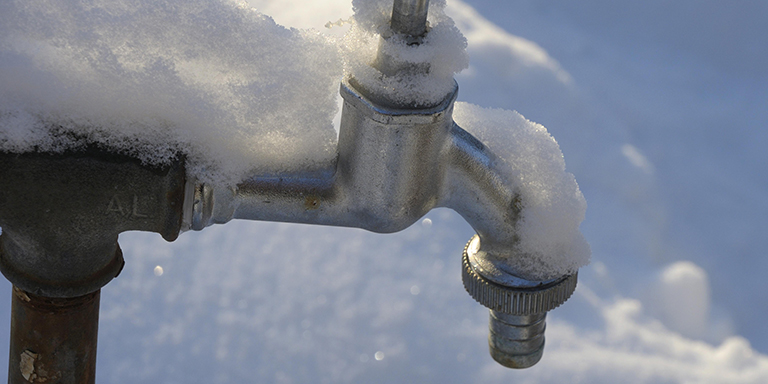When temperatures plunge, your plumbing is at risk. Frozen pipes and water leaks aren’t just inconvenient—they can lead to costly repairs and extensive property damage. Whether you’re a homeowner or a property manager, taking proactive steps to winter-proof your plumbing is essential for a warm and worry-free season.
This guide will walk you through the risks associated with winter plumbing issues and provide actionable tips to protect your pipes and your property. By the time you finish reading, you’ll know exactly how to safeguard your plumbing system in even the coldest months.
Why Winter Plumbing Maintenance Is Crucial
Winter weather can wreak havoc on plumbing systems. When temperatures drop below freezing, water inside pipes can freeze, expand, and cause the pipes to burst. The resulting leaks or flooding can damage walls, floors, and personal belongings, leading to repairs that can cost thousands of dollars.
Beyond financial costs, burst pipes disrupt your daily life. No homeowner or tenant wants to deal with the stress of a flooded basement or a kitchen faucet that’s out of commission. Taking time to winterize your plumbing system now can help you avoid these headaches later.
Understanding the Risks: Frozen Pipes and Water Damage
To prepare effectively, it’s important to understand the risks of frozen pipes and water damage. Here’s what happens:
How Pipes Freeze
When temperatures fall, water inside exposed or poorly insulated pipes begins to freeze. Because water expands as it freezes, the pressure inside the pipe builds until it cracks or bursts.
The Aftermath of a Pipe Burst
Pipe bursts can spill hundreds of gallons of water into your home, leading to structural damage, ruined furniture, and mold growth. Water damage not only causes expensive repairs but can also lead to health issues if not addressed properly.
The good news? With proper preparation, frozen pipes and water damage are entirely preventable.
Winter Plumbing Checklist for Homeowners and Property Managers
Preventing frozen pipes and water damage starts with a strong defense. This winter checklist will give you peace of mind during the coldest months.
1. Insulate Exposed Pipes
Exposed pipes in unheated areas like basements, attics, and garages are especially vulnerable to freezing.
- Use foam pipe insulation or heat tape to protect these pipes.
- For an extra layer of protection, wrap pipes with an insulated pipe jacket.
Pro Tip: Pay special attention to outdoor hose bibs and sprinkler system pipes. Shut off their water supply and drain them to eliminate freezing risks.
2. Keep Interior Temperatures Stable
Even when you’re away, maintain a consistent indoor temperature to prevent pipes from freezing.
- Set your thermostat no lower than 55°F, especially if you’re leaving town.
- Open cabinets under sinks to allow warm air to circulate around pipes.
3. Allow Faucets to Drip
This tip may sound counterintuitive, but allowing your faucets to drip slowly can relieve pressure in your plumbing system.
- Choose a faucet connected to exposed pipes or pipes that have frozen in the past.
4. Know Where the Main Water Shut-Off Valve Is
Emergencies can strike at any time. Knowing how to shut off your home’s main water supply can prevent substantial water damage.
- Locate your shut-off valve and ensure it’s accessible.
- If you’re a property manager, ensure tenants are aware of the valve’s location and its importance.
By following these simple but effective measures, you can significantly minimize the risk of frozen pipes and costly repairs this winter.
Signs of Frozen Pipes and Water Damage
Sometimes, despite your best efforts, frozen pipes can still occur. Recognize the early signs to act quickly and minimize damage:
- No Water Flow: If water isn’t coming out of your faucet, it could indicate a frozen pipe.
- Frost on Pipes: Visible frost on exposed pipes is a clear sign the pipe may be frozen.
- Strange Noises: Whistling or clanging sounds could mean there’s ice buildup inside a pipe.
- Wet Spots or Stains: Puddles, bulges in walls, or water stains on ceilings could indicate a pipe burst.
The sooner you recognize these symptoms, the faster you can address the problem and limit damage.
Immediate Steps to Take if You Encounter Frozen Pipes or Water Leaks
Frozen pipes and water leaks are always an urgent situation. Here’s what to do if you encounter either issue:
Turn Off the Water Supply
Prevent further water flow by shutting off the main water supply.
Thaw Frozen Pipes Safely
Use a space heater, heat lamp, or hairdryer to gradually warm the pipe. Never use an open flame, as this is a fire hazard.
- Start thawing at the faucet and work your way down the pipe.
- Keep the faucet open so water can flow out as ice melts.
Contain Water Leaks
Use buckets, towels, and tarps to contain the leak and minimize damage while waiting for professional help.
Call a Professional Plumber
If you can’t locate the frozen area or if a pipe has already burst, contact a licensed plumber, like Bodenheimer Plumbing Services, immediately.
Time is of the essence. Addressing a frozen or burst pipe quickly can save you thousands of dollars in repair costs.
Long-Term Solutions and Professional Maintenance
For a long-term fix, consider these additional solutions to keep your plumbing system secure through multiple winters:
- Upgrade Your Pipes: Replace older, vulnerable pipes with modern materials such as PEX or copper, which are more resistant to freezing.
- Install a Frost-Proof Faucet: For outdoor faucets, frost-proof models can help prevent freezing pipes.
- Get an Inspection: Schedule an annual plumbing inspection with a professional to identify vulnerabilities you might have missed.
- Install Pipe Sensors and Alarms: Smart devices now exist to detect freezing or leaks in your plumbing system. These can alert you to issues before they become disasters.
Investing in professional-grade solutions can provide peace of mind and protect your home for years to come.
Winterize Your Plumbing and Stay Prepared with Bodenheimer Plumbing Services
Winter doesn’t have to be the enemy of your plumbing system. By taking proactive steps to insulate pipes, maintain steady temperatures, and know the warning signs of freezing or leaks, you can significantly reduce the risks your property faces.
Don’t wait until it’s too late—start winterizing your plumbing today. Need professional help? Contact Bodenheimer Plumbing Services to inspect and safeguard your system. With the proper preparation, your plumbing worries will freeze in their tracks while your pipes stay safe and functional.


